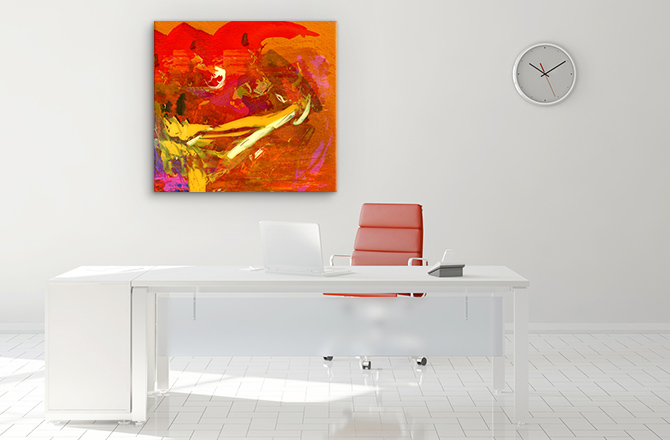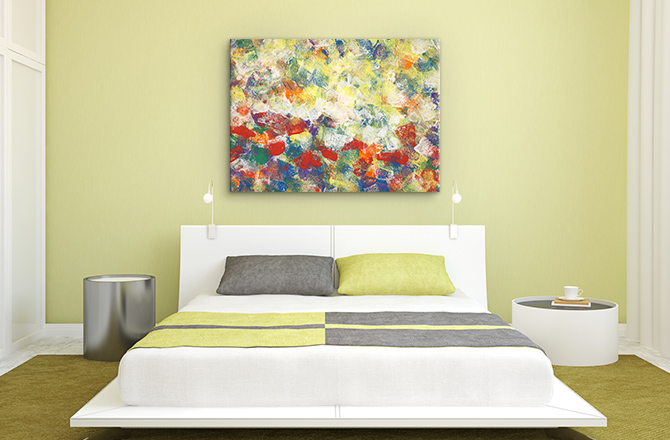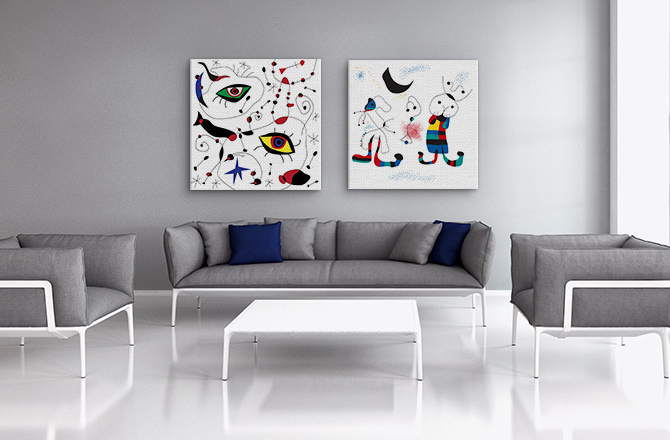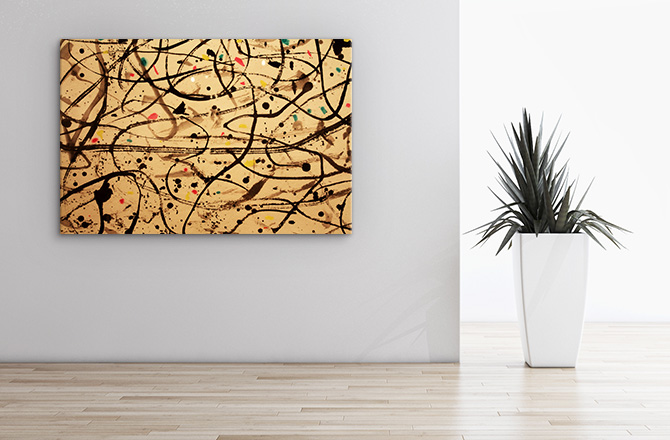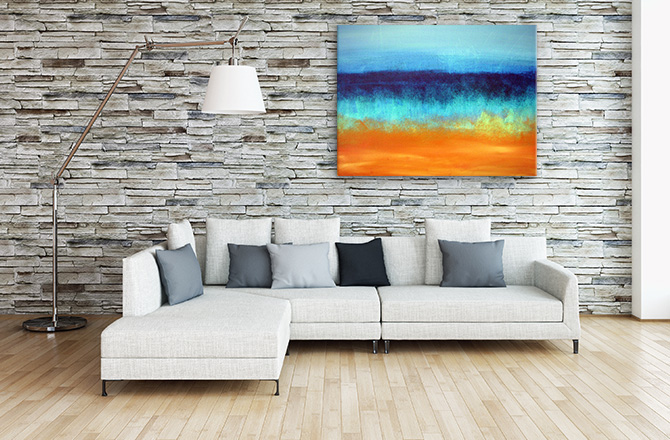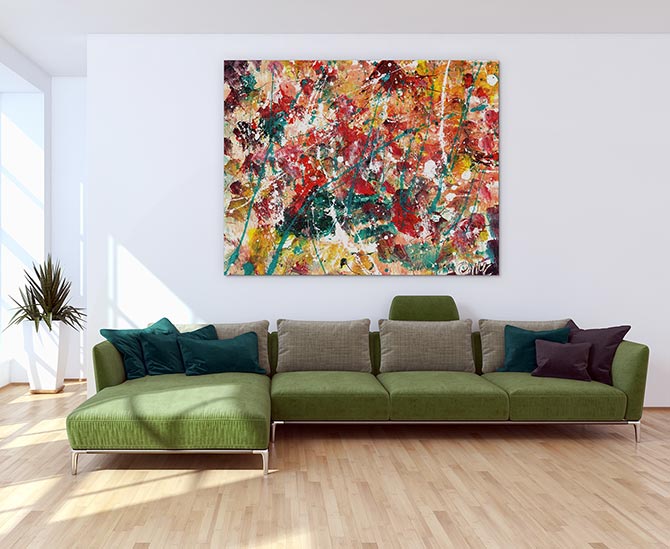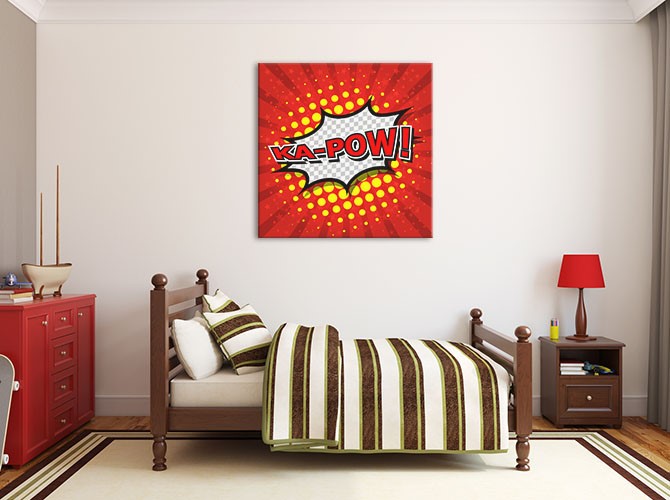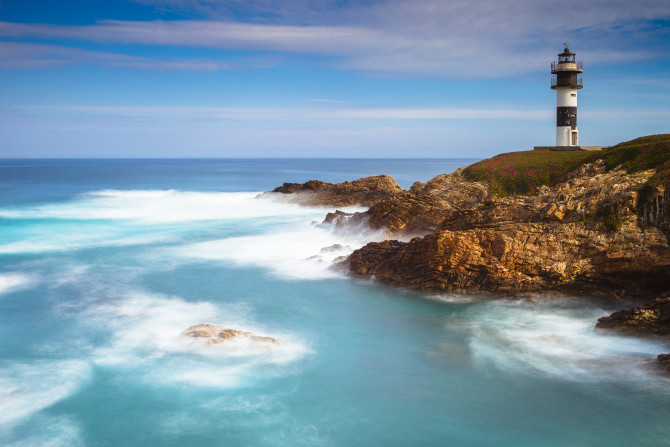Whether you appreciate abstract art or not, the impact and power of the best specimens of abstract art can’t be denied. Even if you’re not quite sure what you’re looking at, the work has an effect, and that makes it a very popular style of art to have in your home for decoration – thought-provoking, beautiful, and with different meanings to different people.
The Abstract Movement
Abstract Art has its roots in the late 19th Century and is largely thought to spring partially from the increased independence (and desperation) of artists as the Catholic Church removed much of its former patronage from the art world. Free from the Church’s restrictions and needing to ‘make a name’ for themselves in order to sell paintings, many artists embraced an experimental art form that slowly became divorced from real-world subjects.
Famous Abstract Artists
Although Abstract Art is not a very old artistic movement, it has a lengthy list of notable names. The question of who are the famous abstract artists and what makes them great is a complex one: The first half is easy enough, but the second part of that question is more challenging. As a way in to discussing the issue, let’s consider five of the most famous abstract artists and examine the source of their greatness, if possible.
Willem de Kooning
de Kooning was born in The Netherlands and lived much of his life in America, and is considered to be a ‘Dutch American’ artist. His approach to painting emphasised movement by the use of frenzied, uncontrolled brush strokes that implied kinetic energy – a style that became known as ‘Action Paintings.’ He also worked with focal ambiguity; figures and shapes in the background of his paintings would often overlap figures in the foreground, deepening the sense that the painting was somehow in movement.
What makes him great: de Kooning’s paintings blurred the lines of reality and were abstract, but maintained just enough shape and grounding in the world to be recognisably paintings ‘of’ something, serving as transitional works for the eye.
Joan Miró
Joan Miró was a Spanish painter who used child-like, simple techniques to create paintings filled with colour and strong, recognisable shapes that nevertheless depicted an unreality that was unsettling and provoking. The combination of simplistic styles taken from children’s work and complex, often dark subjects and compositions created a depth of work that seemed obvious at first and was revealed only after consideration.
What makes him great: Miró’s work demonstrated that abstract art was a celebration of the imagination, not of technique. By purposefully and violently leaving classical techniques behind he helped sever ties with the past and establish Abstract Art as its own movement.
Georgia O’Keeffe
Often called the Mother of American Modernism, O’Keefe is well known to anyone who has studied art history. Although she worked in many formats and movements, she is best known for her abstract depictions of flowers and buildings. Many of these are largely believed to have strong ‘Freudian’ connotations as veiled representations of the female genitalia. A belief O’Keefe herself specifically denied, and which caused her to work in much more specifically ‘realistic’ styles as she grew older in order to escape these charges.
What makes her great: O’Keefe’s abstracts had recognisably American iconography to them, making her the first major Abstract Artist to be identified strongly with the American sensibility. Her paintings incorporating the American Southwest are considered iconic American artistic statements.
Jackson Pollock
Perhaps the most famous abstract artist in the West, Jackson Pollock is renowned for the style of Drip Painting that he innovated. This involves the process of taking paint and dripping it vertically onto a flat canvas on the floor, often using violent gestures or rapid movements to create specific effects with ‘splatter.’
What makes him great: Pollock not only invented his own specific style and embraced abstract more fully than anyone else (his paintings lack any sort of recognisable subject matter), he was also an innovator in materials. He was the first major artist to use liquid paints and other synthetic pigments – making him a truly ‘modern’ artist.
Mark Rothko
Rothko was a Russian emigrant to the United States who once famously said that ‘we start with colour.’ He believed that art began as a primitive or childlike appreciation of shape and colour and as he aged he increasingly concentrated on works that explored these seemingly simple concepts. His large paintings use simple geometric shapes and complex colour palettes to create mood and effect without any reference to the ‘real world.’
What makes him great: In many ways, Rothko is the most abstract artist of all time, eschewing almost every piece of classical art in favour of a streamlined approach that de-constructed art to its most basic components: Colour and shape.
To take these ideas as inspiration for your home decor, shop our Abstract Art collection now.

